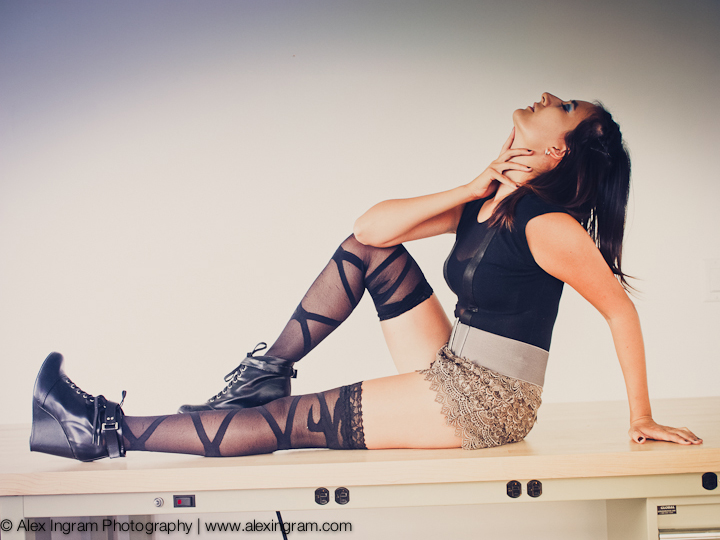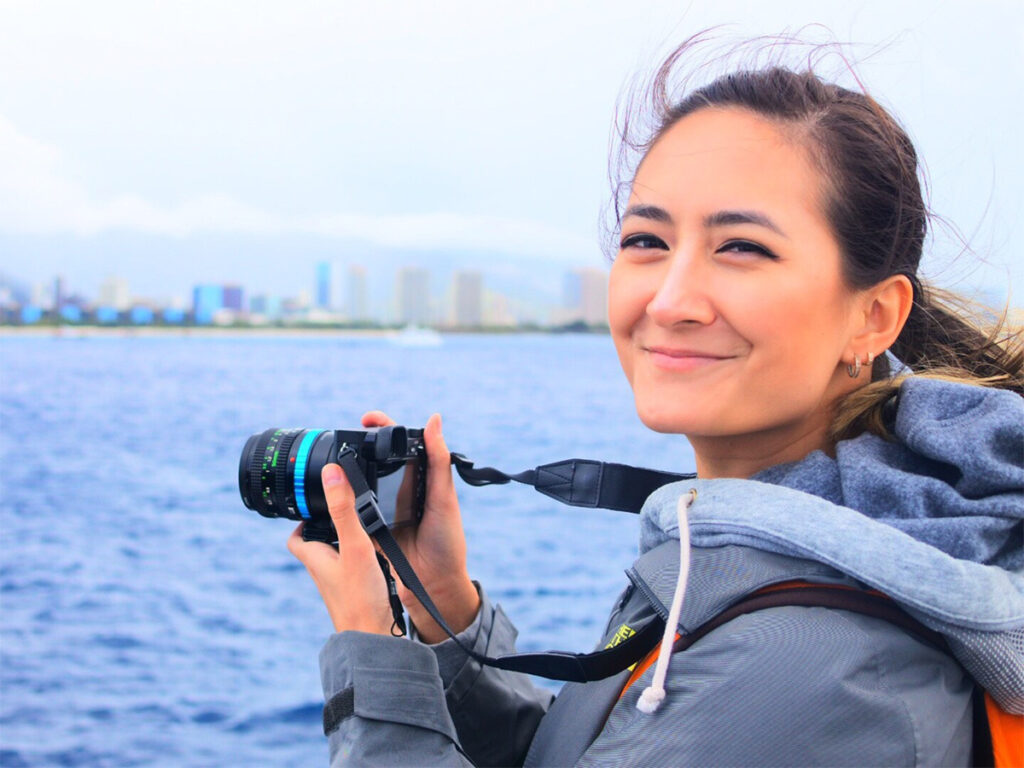Reflections As a Photography Solopreneur
August 8, 2024
Last Updated on November 6, 2024 by Erin Donahue
I can’t believe it’s been three years since I became self-employed as a photography solopreneur! Starting a business as a photographer and/or content creator can be intimidating, but trust me, it’s worth it. I took a leap of faith and left my cushy corporate job at a hedge fund in 2021 and haven’t looked back since. As freelancers, we’re not just gig workers – we’re business owners too.

My Journey: From Corporate to Creative
Let’s rewind a bit. My love for photography actually began in high school when I picked up my first SLR film camera. I even experimented with pinhole photography and developed my own film in a darkroom. I can still remember the smell of chemicals.
Fast forward through college and I got my first “big girl job” at an asset manager. One of my first major purchases was a Sony a6000. I’d use it to take cityscape pictures on my commute home, inspired by photographers like Brandon Woelfel and Steven Wilkes.
A turning point came in 2017 when I traveled to New Zealand. This trip ignited my passion for travel photography and planted the idea that there were other ways to live outside the conventional 9-5 (or in my case, 8:30-7). I started to dabble with photography as a side hustle and my first client came in 2019, and by 2021, I decided to take the plunge and go into photography and content creation full-time.

The Reality of Being a Solopreneur
I’ll be honest with you – working for yourself, especially as a solopreneur where you have no team, can be lonely. Most people in my network can’t relate to this lifestyle. They’re still in the 9-to-5 grind, and I’m out here hustling on my own. Success isn’t linear, and the saying, “comparison is the thief of joy” rings so true! I constantly have to remind myself that everyone goes at their own pace.
One of the biggest challenges? Rejection! I’m constantly pitching rather than getting inbound requests. Financially, it’s been a rollercoaster, which is something I expected before pivoting, but it’s still disappointing at times. Realistically, I’m not making much right now. I live on my savings in between deals, but that’s the freelance life for you. Some might say to give up, but I’m in this for the long game. Business takes time to become profitable.

My Wins So Far
Despite the challenges, there have been some incredible moments and these wins keep me motivated during the tough times.
Year 1
- Sony, my dream brand, reached out to partner with me.
- My light painting videos went viral overnight, amassing over 26 million views.
Year 2
Year two was quieter, but I got invited to Sony Kando and went on my first couple of press trips to Ruidoso and Atlantic City. One of these trips led to my biggest paying client in year 3!
Year 3
- I signed my first 5-figure deal to create UGC assets
- Both Apple and Google reached out, two of the biggest companies in the world, sent me their newest phones, and I’m working with one of them! This is probably going to be my biggest flex, so I might have already peaked lol.

The difference between an Influencer and a Content Creator
Unless you’re “in the industry,” you may think these two are the same thing. In many areas, they are interchangeable. Where they differ, though, is the output. An Influencer is someone who has more of a celebrity status and focuses on converting their “influence” to sales. A content creator, on the other hand, is someone who produces visual assets like photos and videos, often for marketing purposes.
As a photographer who produces visual assets on social media, I consider myself a content creator only – like a one-person production house. I’d never consider myself an influencer because I don’t focus on converting “influence” to sales. I’d rather focus purely on creating compelling visual content.

Tips for Getting Your Solopreneur Business Off the Ground
Define your niche and target audience:
While I prefer going a generalist route instead of a niched one, it’s crucial to have an understanding of what type of photography or content creation you want to specialize in, and who your target audience is. This will help you market your services effectively and attract the right clients by being seen as an authority on the topic.
Build a strong portfolio:
Your portfolio is essentially your resume, and it’s crucial to have a strong one to showcase your skills and experience. Make sure to include a variety of your best work.
Create a professional website
A website is a must-have for any business, and it’s particularly important for photographers. Having only an Instagram is not enough, and is quite unprofessional, IMO. Don’t handle negotiations and business deals in the DM’s. Your website should include information about your services, portfolio, and your contact information.
Network and market yourself
I don’t know who needs to hear this, but unless you’re a nepo baby, or have an established reputation, posting on social media is the fastest way to get your work and name out there. Additionally, I’m of the midset to put your face in front of the camera in order to build a personal brand. A lot of photographers are introverts and naturally only want to stay behind the camera. This is an advantage to quickly capitalize on because many times, both individual and institutional clients, like to put a face to the name. Building a parasocial relationship with your audience is a must if you want to “build community”. Network with your peers in your field, attend industry events, and use social media to promote your business.
Set your rates
This doesn’t need to be broadcasted anywhere, but it’s important to have a clear understanding of your pricing and to communicate this to your clients upfront. For almost all of my projects I custom quote because the scope of work is always different. Determining rates is not a one size fits all, and copying your peers is not advised since everyone’s work is different. I invested in quite a few courses so that I could get a better idea on how to quote my projects with confidence.
Stay organized and keep track of your finances
Being organized is key to running a successful business, and this is where I credit my background in the corporate world. Keep accurate records of your income and expenses, Use bookkeeping platforms like Wave or Quickbooks, or even just a simple Excel spreadsheet. Also consider outsourcing taxes to a CPA to help you manage your finances. Even though I’ve taken a severe pay cut, my CPA has been able to legally ensure that my business has been net positive since inception. This means the IRS doesn’t view my business as a “hobby” – it’s a real, viable enterprise.

Should You Make the Jump?
After sharing my journey and tips, you might be wondering if you should take your side hustle full-time. That’s a personal question only you can answer. Ask yourself: How badly do you want it? In my experience, most don’t want it badly enough. It’s a lonely path, and most of your friends and family won’t relate. Is that something you’re okay with?
If you can hold down a W2 job while pursuing your own thing, that’s ideal. I do recommend working a corporate job first before going off on your own because it gives you structure and a business mindset. If you’re going all in like I did, save up enough to cushion your finances. Get rid of any debt you have. Be prepared for a lot of rejections when pitching yourself.
It’s been challenging, rewarding, and everything in between. If you’re thinking of making the leap, I hope this gives you some insight into what it’s really like. Remember, your path is your own. Embrace it, learn from it, and keep moving forward!

Watch on YouTube
To keep up to date with everything I share, follow along on my social media and read up on what camera gear I use as a photographer and content creator.
Leave a Reply Cancel reply
is the creative studio of Erin Donahue, offering photography, videography, and content creation services for brands, hotels, tourism boards, and publications.
Based in New York City, but available globally, this multi-disciplinary digital creative left a career in the hedge fund space to pursue her passion as a travel and brand photographer, creating imagery that resonates with audiences. She approaches every project with a focus on storytelling, producing visuals that engage and inspire.
Her work has been commissioned by brands like Sony, Apple, and Google, and the content she has created has reached millions across social media.
To keep up to date with everything she shares, follow along on social media and read up on what camera gear she uses to capture the shot.
Niredonahue
© Erin Donahue Creative LLC, All Rights Reserved
Terms of Service & Privacy Policy